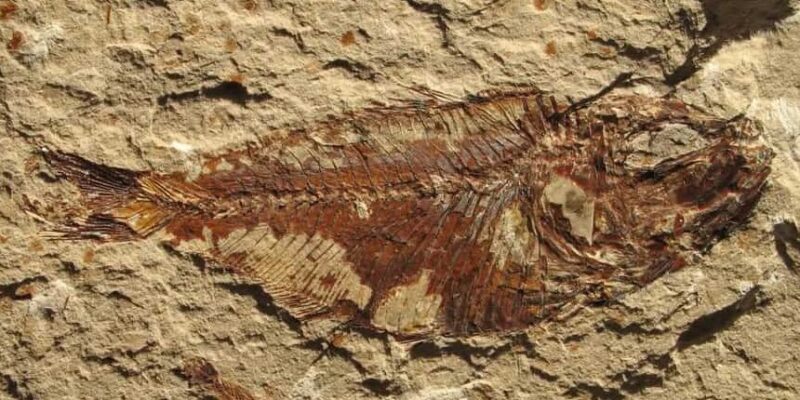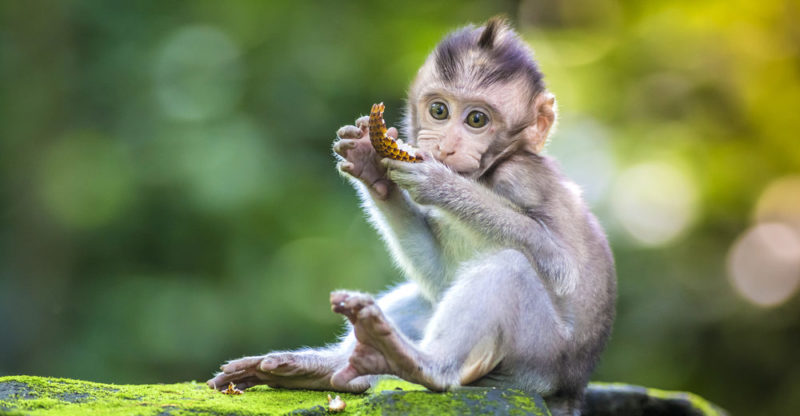We explain what vertebrates are, their origin and their characteristics. Also, how are they classified, what are invertebrates, and more.
What are vertebrates?
Vertebrates are animals that have an internal skeleton made up of a vertebral column that consists of an articulated and resistant structure, which can be bone or cartilaginous. Some groups of vertebrate animals are fish , reptiles , mammals, and birds .
The body of vertebrates is divided into three regions: the head, the trunk and the extremities , and can vary greatly in size according to each species, from a very small being to one with a body several meters in length.
Origin of vertebrates

The origin of vertebrates dates back to 525 million years ago in the Paleozoic era , from the first fish that were able to develop a cartilaginous internal skeleton.
The oldest evidence of a prehistoric fish with a backbone is the haikouichthys, found in China in 1999, which was about two centimeters long. It was characterized by having no jaw, having gills and a large fin over the spine area.
Characteristics of vertebrates

Among the main characteristics of vertebrates, the following stand out:
- The internal skeleton. Vertebrates have as their axis the vertebral column formed by articulating vertebrae that protect the spinal cord from the nervous system , in addition, they have the skull that protects the brain. The internal skeleton can be bony or cartilaginous.
- The jaw. Almost all vertebrates have a jaw in the mouth, in which teeth develop, except for aquatic vertebrates or agnate fish (which means "jawless").
- Limbs. Vertebrates have extremities, such as fins, wings or legs, that allow them to move according to the environment they inhabit, except for some vertebrates called apods, which means “without legs”, such as snakes that move by sinuous movements of their body.
- The skin . Groups of vertebrates have different types of integument, that is, the tissue that covers the skin. They can be: scales like in salmon fish, dermal denticles like in shark, hard shell like in turtle , feathers like in hawk or hair like in wolf .
Classification of vertebrates
The main groups of vertebrates are:
- Mammals . They are warm-blooded vertebrate animals and the vast majority are noted for viviparous fertilization, that is, the embryo develops in the female's uterus. Only some mammals, such as echidnas and platypus, carry out oviparous fertilization, that is, in an egg that is expelled by the female. It is the group of vertebrates to which the human being belongs.
- Birds . They are warm-blooded vertebrate animals that have their bodies covered with feathers, have wings and legs to move around and their type of reproduction is oviparous . Despite having wings, not all birds have the ability to fly, such as the penguin that belongs to the group of aquatic birds or the ostrich that is a running bird that has long legs and small wings.
- Reptiles . They are cold-blooded vertebrate animals that breathe through the lungs and that stand out for their way of moving since they have the ability to crawl or drag their body. They have a thick skin made up of scales that, some animals such as the snake, tend to renew it in its entirety and periodically. Other reptiles, like the turtle, have their spines attached to their outer shell.
- Amphibian . They are cold-blooded vertebrate animals that can live in and out of water. They breathe through gills in the larval stage and develop lungs in adulthood. When adult amphibians are submerged in water, they can breathe through their skin. They are characterized by being divided into three large groups: amphibians without tail, with tail and without limbs.
- Fish . They are aquatic vertebrate animals that breathe through gills and have fin-shaped limbs. The vast majority of them tend to have their bodies covered by scales and have oviparous fertilization.
 Animals are divided into two large general groups: vertebrates and invertebrates. Invertebrates differ from vertebrates by not having a backbone or internal skeleton . For example: The snail is an invertebrate mollusc-type animal that moves through muscular contractions and has a hard spiral-shaped shell or snail on its back.
Animals are divided into two large general groups: vertebrates and invertebrates. Invertebrates differ from vertebrates by not having a backbone or internal skeleton . For example: The snail is an invertebrate mollusc-type animal that moves through muscular contractions and has a hard spiral-shaped shell or snail on its back.The main types of invertebrate animals are classified as:
- Arthropod . Includes spiders, insects , crustaceans, and myriapods .
- Mollusks . Includes clams, octopus , squid, and snails.
- Annelids. Understand leeches and earthworms.
- Echinoderm. Includes starfish and sea urchins.
- Poriferous. Understand sea sponges.
- Cnidarians. Includes jellyfish, corals, and polyps.
The above content published at Collaborative Research Group is for informational and educational purposes only and has been developed by referring reliable sources and recommendations from experts. We do not have any contact with official entities nor do we intend to replace the information that they emit.
Passionate about understanding and contributing to a world that does not stop changing. New forms of Work, Sustainability and Technology. For many years he has worked as a creative for large international companies. He has a Ph.D. in information technology and he has been doing quantitative research in the interdisciplinary areas of information systems, cyber security, data analytics and artificial intelligence. He continue to look for creative solutions through technology to help companies to be more humane and sustainable..
Leave a reply
Your email address will not be published. Required fields are marked *Recent post

Sport: What Is It, Types, Risks, Features, Characteristics and Examples

Dogs: Emergence, Features, Characteristics, Feeding and Breeds

Story: Definition, Elements, Structure, Features and Characteristics

